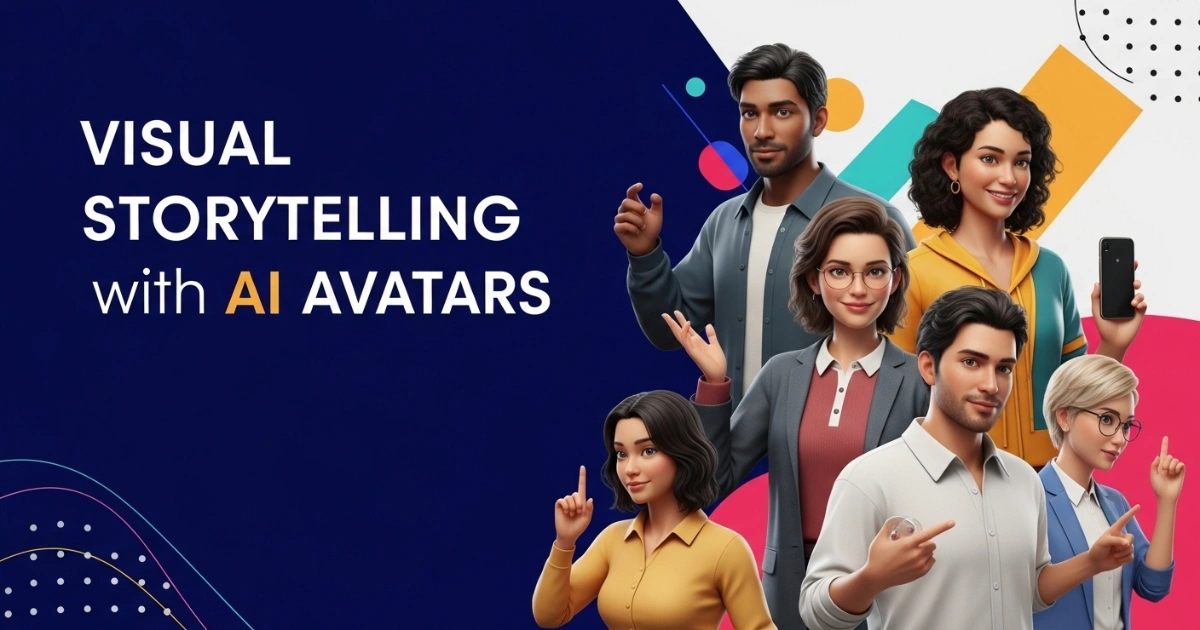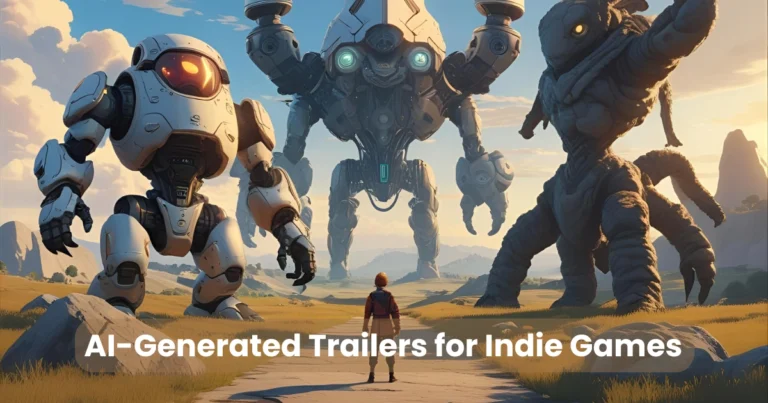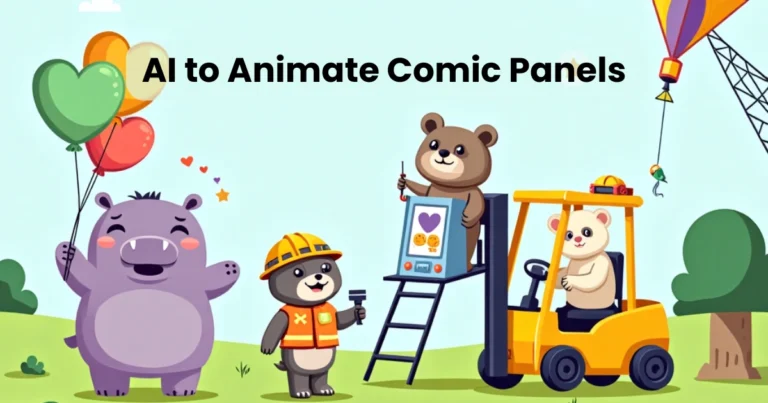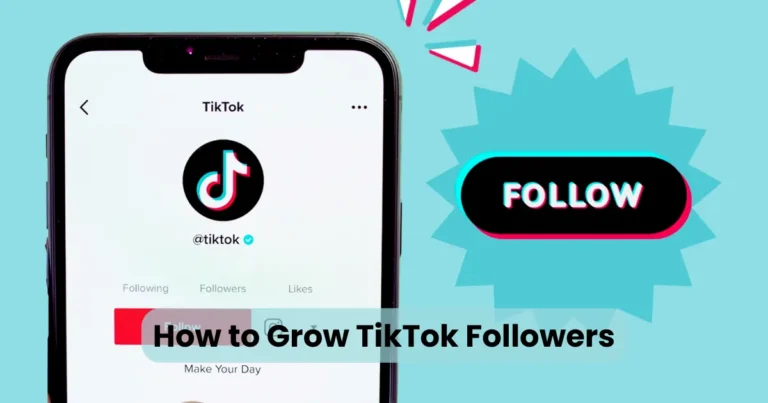Visual Storytelling with AI Avatars: Revolutionizing Digital Narratives

Contents
- 1 What Is Visual Storytelling with AI Avatars?
- 2 Why AI Avatars Are Transforming Storytelling
- 3 Applications of Visual Storytelling with AI Avatars
- 4 Benefits of Using AI Avatars in Storytelling
- 5 Tools and Platforms for Creating AI Avatars
- 6 How to Create Compelling Stories with AI Avatars
- 7 Challenges and Considerations
- 8 The Future of Visual Storytelling with AI Avatars
Visual storytelling with AI avatars is reshaping how brands, creators, and individuals connect with audiences in the digital age. By blending artificial intelligence with creative expression, AI avatars offer a dynamic way to craft compelling narratives that captivate viewers. These virtual characters, powered by advanced algorithms, enable storytellers to deliver immersive experiences across platforms like social media, marketing campaigns, and entertainment. In this article, we’ll explore how AI avatars enhance visual storytelling, their applications, benefits, and the tools driving this revolution. Moreover, we’ll dive into practical tips for creators to maximize engagement and ensure their stories resonate with audiences.
What Is Visual Storytelling with AI Avatars?
Visual storytelling involves conveying a narrative through images, videos, and other visual media to evoke emotions and communicate messages. When paired with AI avatars—digital characters driven by artificial intelligence—this form of storytelling becomes interactive, personalized, and scalable. AI avatars can take the form of animated characters, realistic human-like figures, or even abstract entities, tailored to suit the story’s tone and purpose.
For instance, an AI avatar can act as a brand ambassador in a marketing video, narrate a story in an animated film, or guide users through an interactive game. By leveraging machine learning and natural language processing, these avatars adapt to audience preferences, making storytelling more engaging. As a result, creators can craft narratives that feel alive and responsive, enhancing viewer connection.
Why AI Avatars Are Transforming Storytelling
The rise of AI avatars in visual storytelling stems from their ability to bridge creativity and technology. Here are some key reasons why they’re revolutionizing the field:

1. Personalization at Scale
AI avatars can analyze audience data, such as preferences and behaviors, to deliver tailored content. For example, a fitness brand might use an AI avatar to create personalized workout videos, addressing viewers by name or adapting exercises to their fitness levels. This level of customization fosters deeper emotional connections, making stories more impactful.
2. Cost-Effective Production
Traditional storytelling often involves costly production processes, including hiring actors or animators. AI avatars streamline this by generating lifelike characters without the need for physical sets or extensive crews. Consequently, creators can produce high-quality content on a budget, democratizing access to professional storytelling tools.
3. Enhanced Interactivity
Unlike static visuals, AI avatars can interact with audiences in real-time. For instance, in live-streamed events or virtual reality experiences, avatars respond to user inputs, creating dynamic narratives. This interactivity transforms passive viewers into active participants, boosting engagement.
4. Global Accessibility
AI avatars can speak multiple languages and adapt to cultural nuances, making stories accessible to diverse audiences. By incorporating real-time translation and localization, creators can reach global markets without significant additional costs.
Applications of Visual Storytelling with AI Avatars
The versatility of AI avatars makes them applicable across various industries. Below, we explore some prominent use cases:

Marketing and Advertising
Brands use AI avatars to create memorable campaigns that resonate with consumers. For example, a fashion brand might employ a virtual influencer to showcase products in a visually stunning video. These avatars can adapt their tone, style, and messaging to align with the brand’s identity, ensuring consistency while engaging viewers.
Entertainment and Gaming
In movies, TV shows, and video games, AI avatars bring characters to life with realistic expressions and movements. Game developers, for instance, use AI-driven avatars to create non-player characters (NPCs) that respond intelligently to player actions, enhancing immersion. Similarly, animated films leverage AI avatars to reduce production time while maintaining high-quality visuals.
Education and Training
AI avatars are transforming education by delivering interactive learning experiences. For example, a virtual tutor can guide students through lessons, adapting explanations based on their progress. In corporate training, avatars simulate real-world scenarios, such as customer service interactions, to prepare employees effectively.
Social Media and Content Creation
Content creators on platforms like YouTube and TikTok use AI avatars to produce engaging videos with minimal effort. These avatars can narrate stories, host virtual events, or even lip-sync to audio, adding a unique flair to content. As a result, creators can maintain a consistent online presence without being on camera.
Benefits of Using AI Avatars in Storytelling
Incorporating AI avatars into visual storytelling offers numerous advantages. Let’s examine the key benefits:

1. Increased Engagement
AI avatars create immersive experiences that capture attention. By responding to user inputs or adapting to preferences, they make stories feel personal and relevant. For example, a virtual storyteller in a children’s app can change the narrative based on a child’s choices, keeping them engaged.
2. Time Efficiency
Creating traditional animations or filming live-action content can take weeks or months. AI avatars, however, can be generated and customized quickly using tools like Synthesia or Runway. This efficiency allows creators to produce content faster, meeting tight deadlines without sacrificing quality.
3. Versatility Across Platforms
AI avatars are adaptable to various formats, from short social media clips to long-form videos. Whether it’s a 15-second TikTok or a 30-minute educational webinar, avatars maintain consistency in tone and appearance, ensuring a cohesive storytelling experience.
4. Scalability
With AI avatars, creators can produce content for multiple audiences simultaneously. For instance, a single avatar can deliver a marketing message in different languages or styles, catering to diverse demographics without requiring separate productions.
Tools and Platforms for Creating AI Avatars
To harness the power of visual storytelling with AI avatars, creators can choose from a variety of tools. Here are some popular platforms:

1. Synthesia
Synthesia allows users to create AI avatars that deliver scripted content in multiple languages. With customizable templates and realistic avatars, it’s ideal for marketing, education, and corporate training.
2. Runway
Runway offers AI-powered tools for generating and animating avatars. Its user-friendly interface makes it accessible for beginners, while advanced features cater to professional animators.
3. DeepBrain AI
DeepBrain AI specializes in hyper-realistic avatars that mimic human expressions and speech. It’s widely used in advertising and customer service applications.
4. Veed.io
Veed.io provides simple tools for creating AI avatar videos, perfect for social media content creators. Its drag-and-drop interface simplifies the process of adding avatars to narratives.
5. Unreal Engine
For game developers and filmmakers, Unreal Engine offers advanced AI avatar creation with real-time rendering. It’s ideal for crafting immersive, high-fidelity stories.
How to Create Compelling Stories with AI Avatars
To maximize the impact of visual storytelling with AI avatars, creators should follow these best practices:

1. Define Your Audience
Understanding your target audience is crucial. Analyze their demographics, interests, and preferences to design avatars that resonate. For example, a youthful, animated avatar might appeal to Gen Z, while a professional avatar suits corporate audiences.
2. Craft a Strong Narrative
A compelling story has a clear beginning, middle, and end. Ensure your AI avatar enhances the narrative rather than overshadowing it. Use the avatar to convey emotions, deliver key messages, or guide the audience through the story.
3. Leverage Interactivity
Incorporate interactive elements, such as clickable choices or real-time responses, to engage viewers. For instance, in a marketing campaign, an AI avatar could ask viewers to select a product feature, tailoring the narrative accordingly.
4. Optimize for SEO
To ensure your content reaches a wider audience, optimize it for search engines. Use the keyword “visual storytelling with AI avatars” strategically in headings, meta descriptions, and throughout the content. Maintain a keyword density of 1% (approximately 30–35 uses in a 3000–3500-word article). Additionally, include related keywords like “AI-driven storytelling,” “virtual avatars,” and “digital narratives” to boost relevance.
5. Test and Iterate
Experiment with different avatar styles, tones, and platforms to see what resonates with your audience. Use analytics tools to track engagement metrics, such as watch time and click-through rates, and refine your approach accordingly.
Challenges and Considerations
While AI avatars offer immense potential, they come with challenges that creators should address:
1. Ethical Concerns
AI avatars can mimic real people, raising questions about consent and authenticity. Ensure avatars are used ethically, with clear disclaimers if they represent real individuals.
2. Technical Limitations
Creating realistic avatars requires powerful hardware and software. Small-scale creators may face barriers due to costs or technical expertise. However, user-friendly platforms like Veed.io are making AI avatars more accessible.
3. Audience Perception
Some audiences may prefer human narrators over AI avatars, perceiving them as less authentic. To counter this, focus on creating avatars with relatable personalities and high-quality visuals.
The Future of Visual Storytelling with AI Avatars
The future of visual storytelling with AI avatars is bright, with advancements in AI and graphics technology driving innovation. Emerging trends include:

- Hyper-Realistic Avatars: Improvements in facial recognition and motion capture will create avatars indistinguishable from humans, enhancing immersion.
- AI-Driven Scriptwriting: AI tools will generate scripts tailored to audience preferences, with avatars delivering them seamlessly.
- Virtual Reality Integration: AI avatars will play a central role in VR storytelling, creating fully immersive worlds where users interact with characters in real-time.
- Personalized Advertising: Brands will use AI avatars to deliver hyper-targeted ads, adapting content based on user data in real-time.
As these technologies evolve, visual storytelling with AI avatars will become more accessible, enabling creators of all levels to produce professional-grade content.
Conclusion
Visual storytelling with AI avatars is transforming how we create and consume narratives. By combining creativity with cutting-edge technology, AI avatars offer personalized, engaging, and scalable storytelling solutions. From marketing to education, their applications are vast, and their benefits—such as cost-efficiency and interactivity—make them a game-changer. By leveraging the right tools and strategies, creators can craft stories that captivate audiences and stand out in a crowded digital landscape. As AI technology advances, the possibilities for visual storytelling with AI avatars will only expand, offering exciting opportunities for innovation.






